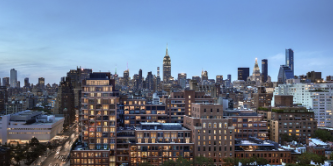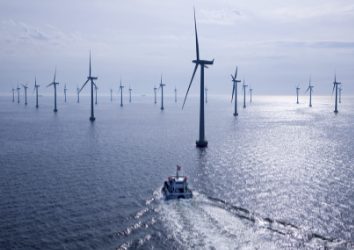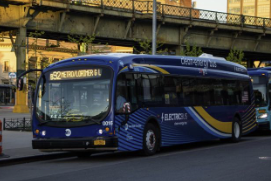Does New York Sleep on Green Solutions?


· 6 min read
New York City is one of the largest cities in the world and one of the most known one as well. It concentrates around 8 million people on a considerably small piece of land. This means that the pollution here is highly concentrated and, of course, highly related to the quality of life level of its population. This density has its pros and cons but, before we submerge ourselves in detail, is New York a remarkable example of what the cities shouldn’t do for their environmentally friendly solutions? No, it isn’t, and I found out why.
In terms of population density, we can describe New York as a “full of people” city. The fact is that this overcrowded city is really well managed. The use of public transports is highest in the US and the gas consumption is equaled to 1920’s tax of gas consumption in the whole country. This giant population density and the low personal transport dependence makes the city that never sleeps one of the most efficient cities energetically in the US.
The national tax of greenhouse gases emissions is 24.5 tons per capita, while new york’s is 7.1 tons per capita (almost half of a resident in San Francisco and almost a quarter of a Dallas resident).
The problem is focused on the air pollution, since the density is huge. It leads to a enormous incidence of respiratory problems. This things consider, the New York City Hall is now obligated to acquire only the highest efficient devices and infrastructures (energetically), in order to reduce green impacts. New York has the largest hybrid buses fleet (clean air diesel and compressed natural gas) in the country. Cars are also progressively turning hybrid or even electric (most taxis).

to reduce green impacts. New York has the largest hybrid buses fleet (clean air diesel and compressed natural gas) in the country. Cars are also progressively turning hybrid or even electric (most taxis).
The city is also leader on green buildings and bioclimatic infrastructures including the Hearst Tower, The Visionaire, 7 World Trade Center, and the Greenwich Lane (the last one is a full block made up of 204 luxury units which was built with recycled and local building materials, a storm water collection system, low emitting paints and flooring, high-efficiency LED lights and water efficient plumbing).
New York introduced many policies on reducing energy consumption, including changing more than 11 thousand common traffic lights and pedestrian signs to new ones with low energy consumption (90% less than the conventional ones). The city also replaced 149 thousand light posts and more than 180 thousand refrigerators (low efficient) in public habitations (these ones were replaced with new ones that use a quarter of the energy needed to the old ones).
Also, the electricity used in the Statue of Liberty, Ellis Island and other 22 federal buildings around New York is provided by wind energy.

New York also has different clean energy projects, including the Clean Path New York, an 11 billion infrastructure that will provide 7.5 million megawatt-hours of emissions-free energy to New York City every year, 1800 megawatts of new solar power generated in Upstate and Western New York, 2000 megawatts of new on-shore wind power generated in Upstate and Western New York. Coupled with 8300 new jobs created in the state and 49 million tons of CO2 Emissions eliminated statewide. These projects comprised of over 20 wind and solar generation projects – all in New York State – and a new 175-mile underground transmission line will be extremely helpful to turn New York greener.
New York is unique in so many ways but one of those is the large use of public transports in the city. While in the US almost 90% of the Americans drive to work, in New York is the opposite. In New York City (according to a study in 2000), more than half of the families don’t have a car (In Manhattan this number increases to almost 75%, while nationally this number is at 8%). Around a third of the public transportation users in the Us are New Yorkers, considering only 6% of new yorkers’ trips are made with cars.
This outstanding use of public transports saved 1.8 billion gallons of oil in 2006 and almost 4.6 billion dollars on gas costs.
According to the Green Building Information Gateway, there are now more than 2 thousand green-certified spaces in NYC, with approximately another thousand registrations on file for projects in development.
New York also ranks 3rd in the nation with 2924 commercial buildings that are LEED registered and certified, totaling more than 519 million square feet of LEED registered and certified green building space (LEED (Leadership in Energy and Environmental Design) is the most widely used green building rating system in the world. Available for virtually all building types, LEED provides a framework for healthy, highly efficient, and cost-saving green buildings. LEED-certified buildings are designed and constructed with a focus on energy savings, water efficiency, reduced carbon emissions and improved indoor air qualit).

4. Daily fees for drivers: For the first time in the country, a daily fee is charged to drivers passing by electronic checkpoints in the busiest parts of the city. As well as aiming to reduce emissions by keeping cars off the road, the initiative is expected to raise billions of dollars that will be reinvested in the public transport system.
Future Thought Leaders is a democratic space presenting the thoughts and opinions of rising Sustainability & Energy writers, their opinions do not necessarily represent those of illuminem.
illuminem briefings

Labor Rights · Climate Change
illuminem briefings

Architecture · Carbon Capture & Storage
Barnabé Colin

Biodiversity · Nature
Euronews

Degrowth · Public Governance
Politico

Public Governance · Climate Change
Mongabay

Climate Change · Environmental Rights